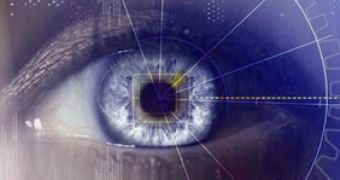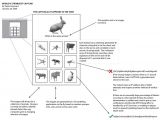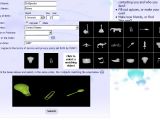A social networking website has implemented a CAPTHCA solution that requires matching 3D images of objects displayed from different viewing angles. This test is very hard if not impossible for today's computers to pass and a very similar concept has recently also been suggested by a blogger.
CAPTCHA stands for "Completely Automated Public Turing test to tell Computers and Humans Apart," and refers to a verification system that can determine if some input is submitted by a real user or some automated script. It is generally used to block bots (computer programs) employed to post spam.
Text-based CAPTCHAs, where users need to visually distinguish sequences of deformed letters or digits displayed on various backgrounds and then type them in the correct order, are currently the most common implementations of the concept. However, significant progress has been made in breaking such tests.
For example, several methods of subverting Microsoft's CAPTCHA versions have been devised over time. We have also recently reported about a neural network implementation in JavaScript that can be used to solve these text-based tests.
About two weeks ago, a blogger named Taylor Hayward presented a personal concept that exploited the visual modularity characteristic of the human mind. This refers to the way in which our brain analyzes and correlates things such as form, color and motion in order to relate to and understand the environment.
"Over millions of years of evolution, the part of the brain that deals with visualizing the world has become very sophisticated, at least in terms of computing power. [Understanding] that a crumpled up pair of jeans on your bedroom floor is just a pair of jeans on the bedroom floor, and not some other piece of clothing, or even part of the pattern on the rug, is a feat no computer can currently do," Mr. Hayward explains.
Therefore, what he suggested was a design in which the user was presented with a 2D image, for example of an animal, as well as several other pictures of animals viewed from different angles (3D). The user would then have to choose the 3D image of the creature depicted in the 2D version. Solving such a test should come naturally to a human being, but would be impossible for the average computer to do. After all, spammers don't use supercomputers and even if they did, they would still require extremely complex algorithms that not even the researchers have fully figured out yet.
The implementation actually compares randomly generated strings of text assigned to the images and additional layers of security can be added. Hayward suggests a period of time after the strings expire or IP banning after several failed attempts. He seems to have seriously thought this through, as even his choice of images of animals has a scientific explanation. "Humans currently are able to identify animals faster than any computer given a changing selection of images," he says.
The blogger considered capitalizing on his idea, but after realizing that there wasn't much monetary gain potential in the CAPTHCA market and failing to successfully pitch his concept to reCAPTCHA, he released it into the public domain. "It is now owned by humanity. I hope the idea comes to fruition soon – some CAPTCHAs are getting hard to read," Taylor Hayward concludes.
It looks like he didn't have to wait that much, as YUNiTi.com, a social networking service, has just implemented a highly similar concept. Its new account registration process presents users with an image of three 3D objects, each of which needs to be matched with its respective 2D representation.

 14 DAY TRIAL //
14 DAY TRIAL // 


